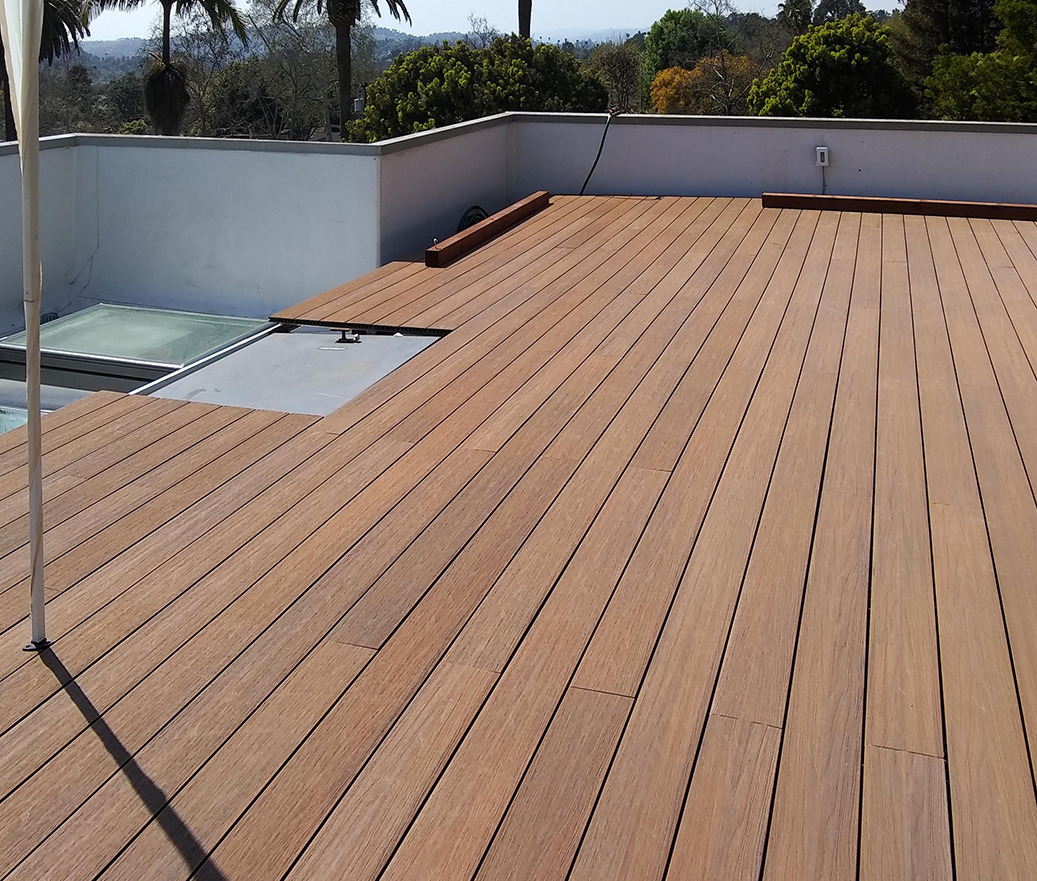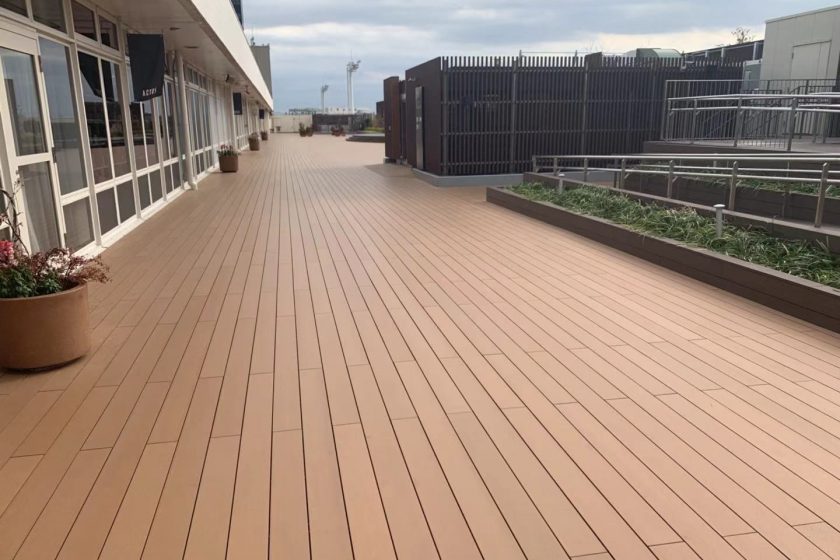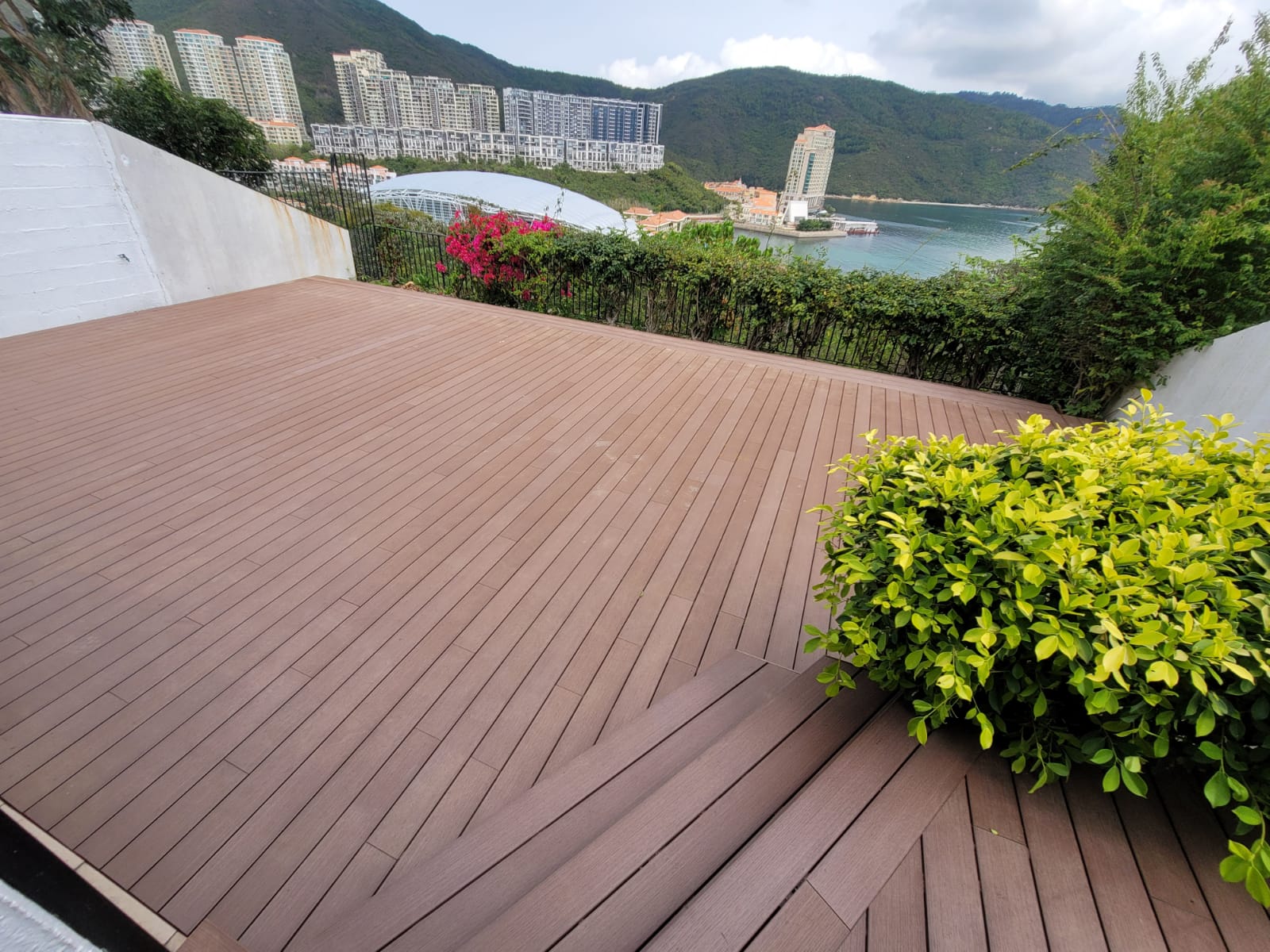Factors affecting the price of wood-plastic flooring
Monday, June 26, 2023Understanding of wood-plastic flooring
WPC flooring combines the texture of natural wood with the waterproof and anti-corrosion performance of plastic materials, and has become the first choice for indoor and outdoor floor decoration in recent years due to its excellent performance. However, in the wood-plastic floor market where fish and dragons are mixed, the price and quality of flooring products from different manufacturers vary greatly.
As a relatively new building material, wood-plastic flooring is not well understood by many people, and price often becomes the decisive factor for choosing wood-plastic flooring. These people often find out a year or even a few months after the completion of the project that the trouble caused by poor-quality flooring is not only endless repairs, but also affects the overall aesthetics of the project.

Hard performance indicators of wood-plastic flooring
Density: The density of wood-plastic floor directly determines the strength and impact resistance of the profile. Floors with insufficient density are easily crushed in scenic spots where the flow of people is relatively concentrated, leading to safety accidents such as collapse. However, the density of the section is not easy to distinguish with the naked eye.
Shrinkage: Shrinkage refers to the property of a profile to expand and contract. The shrinkage performance of qualified WPC is usually around 3/1000 to 5/1000. Inferior products often exceed this indicator by a lot. The greater the shrinkage, the greater the curvature of the expansion and contraction deformation of the profile under the change of cold and heat cycles, which will easily affect the appearance of the project over time. When choosing a wood-plastic floor, be sure to consider a high-quality floor with a small shrinkage rate.

Environmental protection level: Environmental protection represents the attitude of a wood-plastic manufacturer. Many producers and consumers often have the idea that the environmental protection of WPC products has nothing to do with them. However, wood-plastic flooring that does not meet environmental protection standards will actually cause certain harm to humans and organisms. In recent years, wood-plastic flooring has been installed on hydrophilic platforms, causing large-scale death of river organisms. Environmental compliance means increased costs and materials. If it fails to meet the standards, neither the industry nor consumers will know that environmental protection has become the most intangible and important indicator of low-carbon environmental protection and sustainable development of wood-plastic profiles.
When choosing wood-plastic flooring, don’t just consider the price. What is more important is to examine whether the flooring manufacturer has research and development capabilities, whether the various data indicators of the wood-plastic floor itself meet the standards, whether it has passed the relevant test report, and whether there is relevant pre-sales and after-sales service. If you choose a poor-quality floor, it will not only affect the appearance of the project, but also require more additional maintenance costs, which is not worth the candle.
